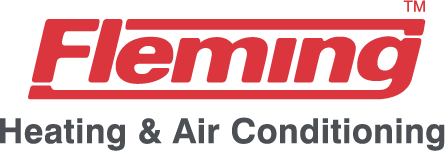
A furnace is usually a background player at home, keeping you warm in the cold winter months. It regularly isn't noticed until a malfunction appears.
One cause may be that your furnace has a cracked heat exchanger. It can potentially be hazardous, so it’s critical to know the symptoms of a cracked heat exchanger and what you should do if you believe that might be the problem.
What Is a Heat Exchanger in a Furnace?
A heat exchanger transfers heat from the combustion chamber inside your furnace to the air that circulates through the air ducts. It generally accomplishes this via coils or tubes that heat the air while acting as a barrier to keep gas produced in the combustion chamber, called flue gasses, from escaping out into your home.
Is a Cracked Heat Exchanger Dangerous?
Thanks to its central role, it isn't surprising that a broken heat exchanger can be hazardous. Cracks in the heat exchanger can permit dangerous gasses – including carbon monoxide, which can be lethal – to circulate throughout your home.
For this reason, never turn on your heating if you suspect it has a cracked heat exchanger, as this could make the entire family sick. Contact an HVAC professional as soon as possible if you believe your furnace has a cracked heat exchanger that should be repaired.
Four Warning Signs of a Cracked Heat Exchanger:
- Furnace switches off: A cracked heat exchanger can cause your furnace to turn off.
- Odd Smells: If the air escaping your furnace has a powerful chemical scent, it may be evidence gasses are seeping through cracks in your heat exchanger. These byproducts, which may smell like formaldehyde, are a significant warning sign.
- Carbon monoxide alarm is triggered or you notice poisoning symptoms: If a cracked heat exchanger is releasing carbon monoxide in your home, your carbon monoxide alarm may go off or family members may experience signs of carbon monoxide poisoning. Symptoms include headaches, dizziness, weakness, nausea, vomiting or feeling sleepy. If an alarm goes off or you feel unwell, exit the home immediately and then call for help.
- Soot: If you find black sooty buildup near the exterior of your furnace, it’s more evidence something might be seriously wrong.
What to Do if the Furnace Heat Exchanger is Cracked
If you worry your furnace has a cracked heat exchanger, hire a pro experienced in furnace installation South Beloit and Belvidere as soon as possible so they can take a look at your system and, if required, start a furnace heat exchanger replacement. Costs should differ depending on the situation, but estimates run in the neighborhood of $1,000 to $3,000.
Fortunately, the good news is that heat exchangers are regularly covered by the warranty. You’ll want to confirm the warranty paperwork on your furnace, as while the warranty may not cover the entire cost of repairs, it can significantly reduce your bill.
How to Avoid a Cracked Heat Exchanger in Your Home
One of the most convenient ways to minimize the risk of problems in your furnace overall is via routine furnace maintenance. Furnaces provide the best possible return on investment when they operate efficiently. Hiring a certified professional to examine your furnace for worn-out parts, dirty filters and other potential problems can help you avoid getting a big bill later on.
It’s also a good idea to inspect your furnace filters every few months – it’s encouraged some filters be swapped out every 90 days or sooner if they are dirty or grimy. While the filters are not part of the heat exchanger itself, the strain of drawing air through a clogged filter makes your entire furnace work longer to accomplish its job. And the harder your furnace works, the more strain components like the heat exchanger will experience.


